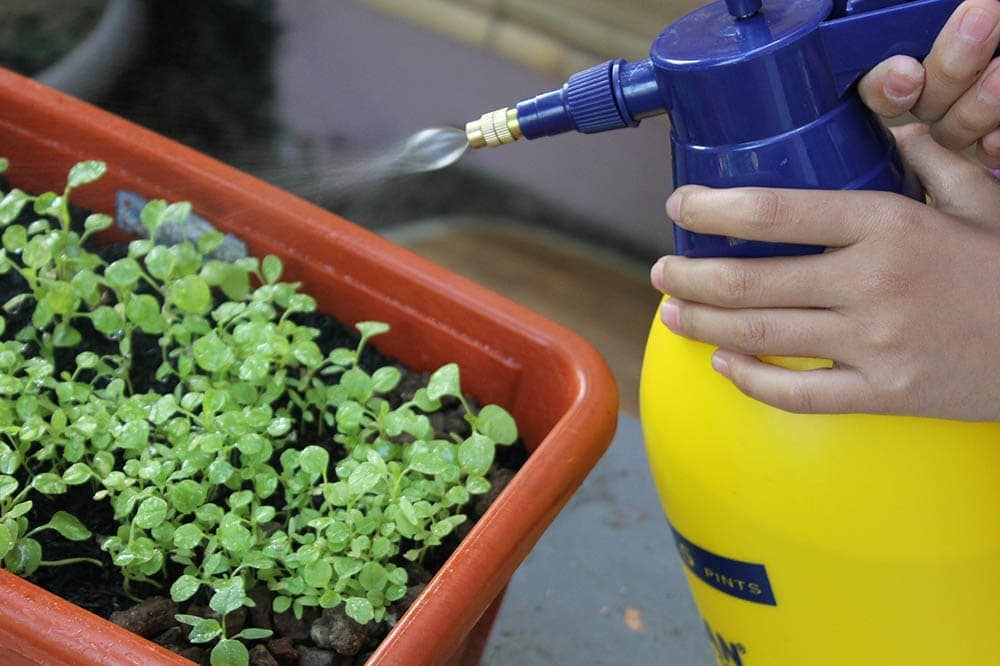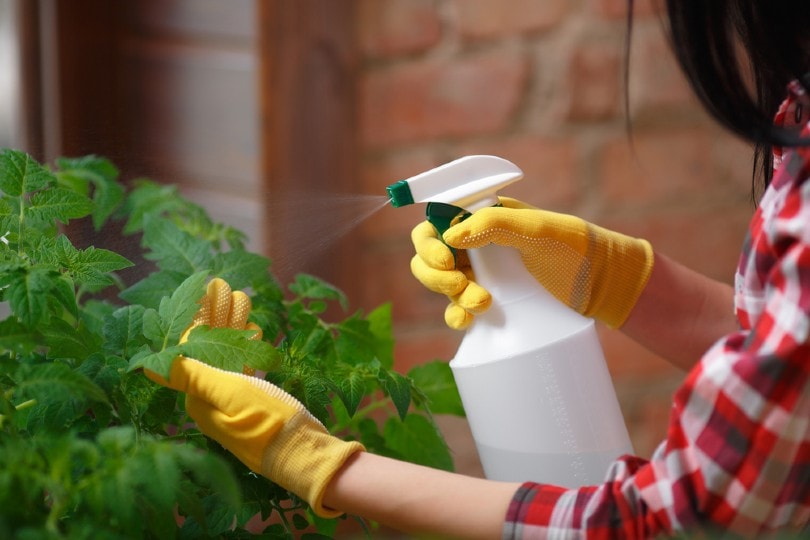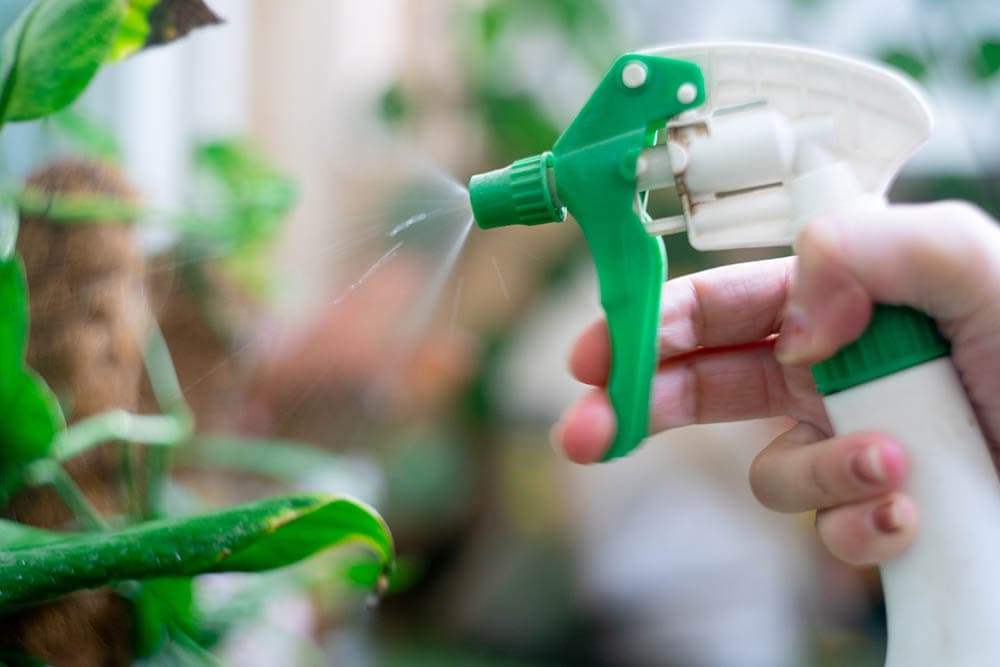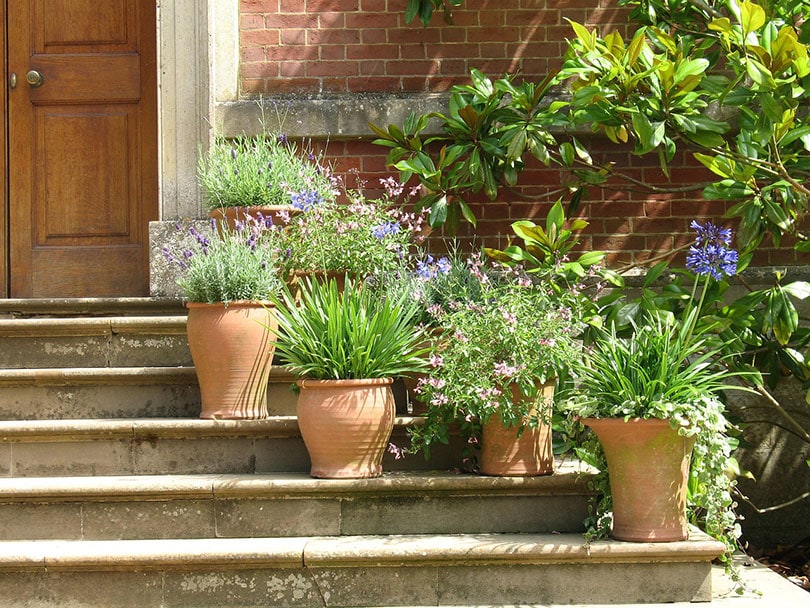How To Water Air Plants: 6 Easy Tips & Tricks
-
Pete Ortiz
- Last updated:

The Tillandsia, better known as an air plant, is a low-maintenance plant that will make any plant collector happy. Tillandsias are epiphytes, which means they grow on other plants in nature, such as tree trunks, rather than by rooting in the ground. They absorb nutrients and water from the air through scales on their leaves.
We have put together some tips and tricks to guide you on how to water your air plant. We will look at what method will best suit your Tillandsia, how to know when it needs watering or if you have given it too much, and what kind of water it prefers.
 How To Know If Your Air Plant Needs Water
How To Know If Your Air Plant Needs Water
The leaves will display a tell-tale sign that your plant is thirsty. You can tell if an air plant needs water by the appearance of its leaves. If it becomes too dry, the leaves will curl inwards, and you will know it’s time for watering or misting. This can happen before seven days have passed since the last misting or watering, depending on how hot and dry it is.
How To Water Your Air Plant
There are two methods for watering your air plants: soaking and misting.
Soaking
There are numerous air plant species, but they can all be watered using the soaking technique.
- Fill a clean sink or tub halfway with room-temperature water, deep enough to submerge each air plant completely.
- Soak your plants for 30 to 60 minutes. It’s fine if the air plants float to the surface as they soak, but make sure they stay submerged for at least 15 minutes.
- Shake off excess moisture after removing your plants from the water. Then, place each air plant upside down on a clean cloth or paper towel for an hour or two to drain.
Misting
Misting air plants with a spray bottle or mister a few times per week can supplement your soaking routine, but it usually does not provide enough consistent moisture on its own.
- Fill a spray bottle with room temperature water.
- Spray each plant generously, saturating it until water is dripping off the leaves.
- Thoroughly mist them at least once a week.
Now that you know when your plant needs water and the methods you can use, follow these tips and tricks to help keep your air plant hydrated safely.

The 6 Easy Tips To Water Air Plants
1. Use the Correct Water When Watering Your Air Plant
Water contains minerals, and air plants can obtain nutrients from it. The leaves of the plants absorb water rather than the roots. Rainwater, pond water, or well water is beneficial to the air plant because they contain nutrients. It is best to avoid using distilled or filtered water because they lack minimal nutrients. Regular tap water is also acceptable, bit it must first be allowed to sit in an open container overnight. This allows the chlorine to dissipate and the water to warm up. Air plants prefer slightly acidic water with a pH range of 5.5-6.
2. Water Your Air Plant Regularly

You need to water your air plant regularly. There is a widespread misconception that air plants can survive in a home or garden without being watered.
In arid weather, water your air plants every 3–4 days. In humid conditions, every 14 days is adequate. In the winter, reduce the soaking to every other week. While larger air plants should be soaked in water, smaller air plants can be misted.
3. How To Water Your Air Plant Attached to Wood
Sometimes air plants are glued to a decorative support, like wood, and they can thrive in the environment, but it can make watering the plant a little difficult. Soak the air plant without submerging the wood if possible, and be sure to invert the plant afterward to ensure thorough drying.
4. Watering Air Plants with Flowers

Watering can be more difficult with flowering air plants. While in bloom, most air plants will require more frequent watering, but it is vital to ensure the water doesn’t accumulate in the center of the plant and cause rot. Wetting the flower reduces its bloom time, and the best way to water the leaves is to submerge them while keeping the flower out of the water. If this proves too difficult, mist the leaves frequently but do not wet the flower. You can also place the air plants in gently flowing water.
5. Do Not Over Water Your Air Plant
You can tell you have overwatered your air plant when the leaves fall off, along with browning and turning black. Once this stage is reached, there is little hope of saving your air plant
6. Make Sure You Dry Your Air Plant Thoroughly

Another important aspect of watering your air plants is drying them properly afterward. You can dry your air plants by placing them on their side or upside down on a dish towel. They should be completely dry to the touch within two hours after soaking. Return your air plants to their terrariums or vases only when completely dry. Watering plants and placing them inside an enclosure straight away may cause rot to develop in your plant. Turning your air plant upside down will help eliminate any excess water, and shaking off any remaining water can also help.
Conclusion
Air plants are low-maintenance houseplants that are simple to care for indoors. The most difficult aspect of their care is getting familiar with their unique needs in comparison to other houseplants that you are used to. Air plants cannot survive solely on air and must be watered regularly. In fact, one of the essential aspects of properly caring for an air plant indoors is proper watering.
Most plants can be successfully watered using the soaking method, while some prefer misting. Researching the type of air plant you have will help you determine the best watering method, and following our tips and tricks will assist in keeping your air plant adequately hydrated and thriving.
Related Read:
- How Fast Do Wind Turbines Spin?
- Are Wind Turbine Blades Recyclable? How Do You Properly Dispose of Them?
Featured Image Credit: NOPPHARAT2465, Shutterstock
Contents

 How To Know If Your Air Plant Needs Water
How To Know If Your Air Plant Needs Water
